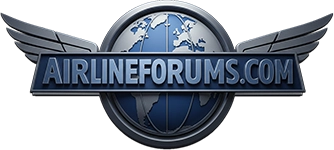nycbusdriver
Veteran
You need to understand something- We have not had any kind of reputable , smart, think-outside-the-box management for about 20 of the 25 years I've been here. And the saga continues.......
They can't even think INSIDE-the-box.
You need to understand something- We have not had any kind of reputable , smart, think-outside-the-box management for about 20 of the 25 years I've been here. And the saga continues.......
What has SWA done in LAS? Have they decreased at all? Remained the same? Increased with USAirways pullout?
Yes, and therefore lowers CASM - the only additional cost is the incremental cost of operating the flights but it allows fixed costs to be spread over more ASM's. That's why it was worth it for HP to have the night hub in LAS despite the generally low yield nature of that traffic.Doesn't night flying (out of LAS, for example) actually INCREASE fleet utilization?
But hey I'm just an dumb arsed customer not worthy of a response to an e-mail from Scott Kirby.
Hey HPFA,
WN is the highest percentage of unionization in the industry and are the highest paid.
I'm no airline management professional but can we break down some costs? Why is US's so high? It sure as HELL isn't the employees.. . . .
Bankruptcies, restructurings, pay cuts and radical changes in airplane fleets and schedules were supposed to lower costs at older airlines so they could afford to match the cheap fares offered by upstart low-cost carriers. It hasn't turned out that way. The "cost gap" between so-called legacy airlines that have been around for decades and younger low-fare carriers has remained, according to new analysis from consultancy Oliver Wyman. In the long term, this could make it harder for older airlines to match very low fares.
"It's largely the cost of an older airline," says Douglas Parker, chief executive of US Airways Group Inc., whose company is the combination of a legacy airline, US Airways, and a start-up, America West Airlines. On the "east side" of the company -- the original US Airways -- every pilot is at the top of the pay scale.
"That's not the case at JetBlue or AirTran or Southwest," Mr. Parker says. "Even if the scale is the same, the cockpit costs are different."
In 2003, as airlines were beginning their massive restructurings, Oliver Wyman found low-cost airlines had a "cost gap" advantage over legacy airlines of 2.7 cents per seat mile. Last year, the gap was 3.8 cents per seat mile. In percentage terms, the gap has remained roughly the same over the past six years -- legacy airline costs have been, on average, 23% to 27% higher than low-cost airlines per seat mile.
The key to keep costs low, he says, is growth -- another area where the low-cost carriers have an edge. Airlines that grow add new airplanes that don't yet have lots of maintenance costs or reliability issues. Growing airlines hire employees at the bottom of wage scales. Conversely, airlines that are shrinking have a harder time reducing unit costs. They may ground airplanes but still have to keep up payments on them. They may be paying leases on airport gates and counter space they no longer use. Management expenses may be spread over fewer passengers, raising the company's costs per passenger.
If you want to understand the CASM "increase" you need to first factor out all the "projects" and just plain boneheaded management moves that have increased costs: the unsuccessful run at DAL, the completely bungled computer "changeover", etc. and so on. If you want to say that AWE "bought" US, then AWE must then also take responsibility for the CASM "increase".If night flying were more than just "marginally" profitable is there any doubt WN would be doing it? The fact is pre-merger AWE had a CASM at around 8.5 (roughly equal to WN) so could eak out a small profit with a night flight system out of LAS. Post merger AWE has a CASM of around 14 and we can no longer viably compete in many markets (including LAS) due to the increased costs brought on by integrating the east into our system.
I still think a massive buy out is the only long term hope of changing things followed by a big influx of younger workers.

Indeed, were US management to view their employees as assets rather than liabilities, they would actually use their employees in an efficient manner. Apparently employees do not cost enough to warrant management resources to make employees efficient. sigh.One thing that is not easy to pull out of this cost is worker productivity. I guarantee that SW gets more work out of their employees on a per person basis then US does. And that has almost everything to do with attitude.
